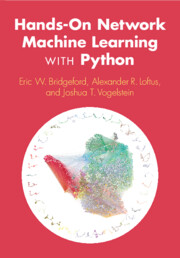Refine search
Actions for selected content:
52341 results in Statistics and Probability
Leveraging rules on integrated 3D semantic city models for validating scenarios of urban evolution
- Part of
-
- Journal:
- Data-Centric Engineering / Volume 6 / 2025
- Published online by Cambridge University Press:
- 25 September 2025, e47
-
- Article
-
- You have access
- Open access
- HTML
- Export citation
Asymmetric Nash insurance bargaining between risk-averse parties
-
- Journal:
- ASTIN Bulletin: The Journal of the IAA , First View
- Published online by Cambridge University Press:
- 25 September 2025, pp. 1-27
-
- Article
-
- You have access
- Open access
- HTML
- Export citation
Behavioural perspectives on personal health data sharing and app design: an international survey study
-
- Journal:
- Data & Policy / Volume 7 / 2025
- Published online by Cambridge University Press:
- 25 September 2025, e66
-
- Article
-
- You have access
- Open access
- HTML
- Export citation
Mean flow data assimilation using physics-constrained graph neural networks
-
- Journal:
- Data-Centric Engineering / Volume 6 / 2025
- Published online by Cambridge University Press:
- 25 September 2025, e48
-
- Article
-
- You have access
- Open access
- HTML
- Export citation
A brief review of deep learning methods in mortality forecasting
-
- Journal:
- Annals of Actuarial Science , First View
- Published online by Cambridge University Press:
- 24 September 2025, pp. 1-16
-
- Article
-
- You have access
- Open access
- HTML
- Export citation

Hands-On Network Machine Learning with Python
-
- Published online:
- 23 September 2025
- Print publication:
- 18 September 2025
Data visualization tool for a fairer geography of refugee protection in Europe
- Part of
-
- Journal:
- Data & Policy / Volume 7 / 2025
- Published online by Cambridge University Press:
- 22 September 2025, e63
-
- Article
-
- You have access
- Open access
- HTML
- Export citation
Adversarial natural language processing: overview, challenges, and policy implications
-
- Journal:
- Data & Policy / Volume 7 / 2025
- Published online by Cambridge University Press:
- 22 September 2025, e64
-
- Article
-
- You have access
- Open access
- HTML
- Export citation
Leveraging AI in peace processes: A framework for digital dialogues
- Part of
-
- Journal:
- Data & Policy / Volume 7 / 2025
- Published online by Cambridge University Press:
- 22 September 2025, e65
-
- Article
-
- You have access
- Open access
- HTML
- Export citation
Worldwide threatening prevalence of carbapenem-resistant Pseudomonas aeruginosa
-
- Journal:
- Epidemiology & Infection / Volume 153 / 2025
- Published online by Cambridge University Press:
- 19 September 2025, e114
-
- Article
-
- You have access
- Open access
- HTML
- Export citation
Comparing the sets of volume polynomials and Lorentzian polynomials
- Part of
-
- Journal:
- Combinatorics, Probability and Computing , First View
- Published online by Cambridge University Press:
- 19 September 2025, pp. 1-14
-
- Article
-
- You have access
- Open access
- HTML
- Export citation
Metastability for telegraph processes in a double-well potential
-
- Journal:
- Journal of Applied Probability , First View
- Published online by Cambridge University Press:
- 19 September 2025, pp. 1-21
-
- Article
- Export citation
Phylodynamic inference suggests introductions as main driver of Mpox Clade II outbreak in 2022 in Slovenia
-
- Journal:
- Epidemiology & Infection / Volume 153 / 2025
- Published online by Cambridge University Press:
- 19 September 2025, e115
-
- Article
-
- You have access
- Open access
- HTML
- Export citation
From ‘wild west’ to ‘responsible’ AI testing ‘in-the-wild’: lessons from live facial recognition testing by law enforcement authorities in Europe
-
- Journal:
- Data & Policy / Volume 7 / 2025
- Published online by Cambridge University Press:
- 19 September 2025, e59
-
- Article
-
- You have access
- Open access
- HTML
- Export citation
Glauber dynamics for the hard-core model on bounded-degree
 $H$-free graphs
$H$-free graphs
- Part of
-
- Journal:
- Combinatorics, Probability and Computing , First View
- Published online by Cambridge University Press:
- 19 September 2025, pp. 1-12
-
- Article
-
- You have access
- Open access
- HTML
- Export citation
Factors associated with persistence or recovery from long COVID 6 months post-SARS-CoV-2 infection
-
- Journal:
- Epidemiology & Infection / Volume 153 / 2025
- Published online by Cambridge University Press:
- 18 September 2025, e116
-
- Article
-
- You have access
- Open access
- HTML
- Export citation
Preface
-
- Book:
- Hands-On Network Machine Learning with Python
- Published online:
- 23 September 2025
- Print publication:
- 18 September 2025, pp ix-xvi
-
- Chapter
- Export citation
Frontmatter
-
- Book:
- Hands-On Network Machine Learning with Python
- Published online:
- 23 September 2025
- Print publication:
- 18 September 2025, pp i-iv
-
- Chapter
- Export citation
Appendix B - Learning Representations Theory
-
- Book:
- Hands-On Network Machine Learning with Python
- Published online:
- 23 September 2025
- Print publication:
- 18 September 2025, pp 433-453
-
- Chapter
- Export citation
4 - Statistical Models of Random Networks
- from Part II - Representations
-
- Book:
- Hands-On Network Machine Learning with Python
- Published online:
- 23 September 2025
- Print publication:
- 18 September 2025, pp 98-188
-
- Chapter
- Export citation























